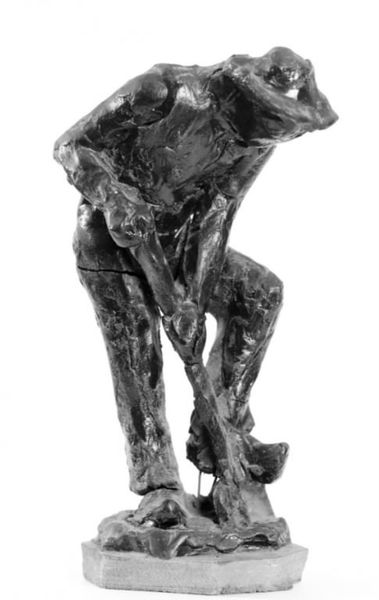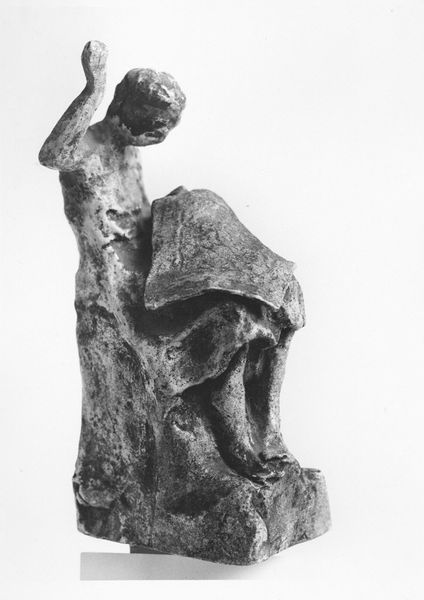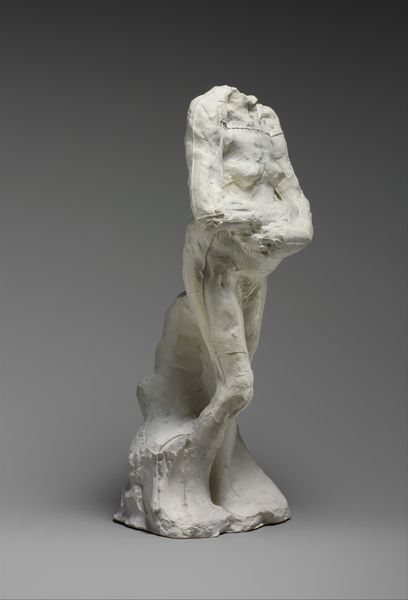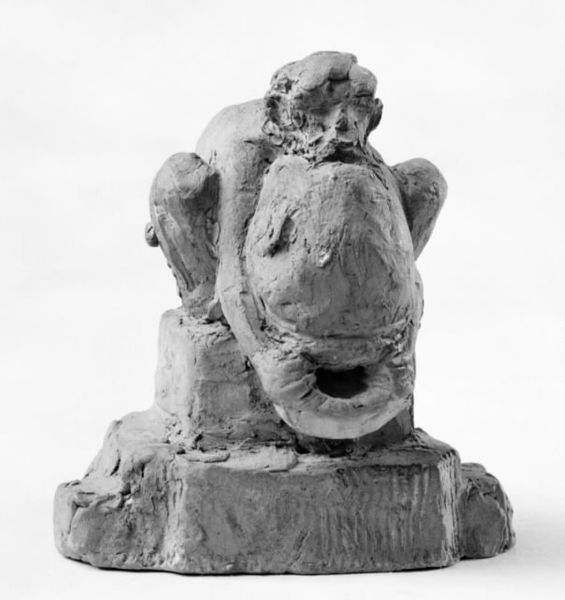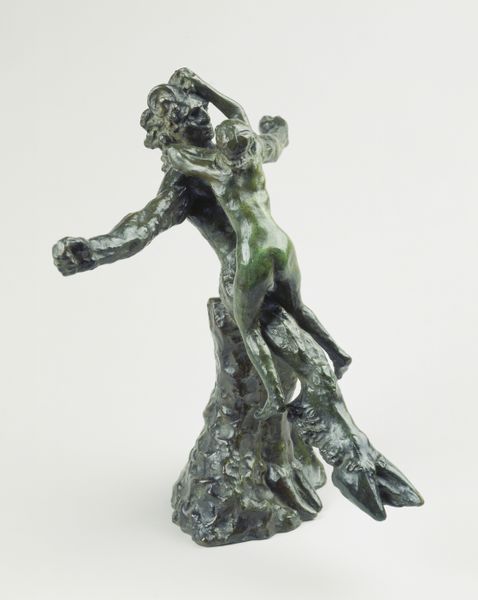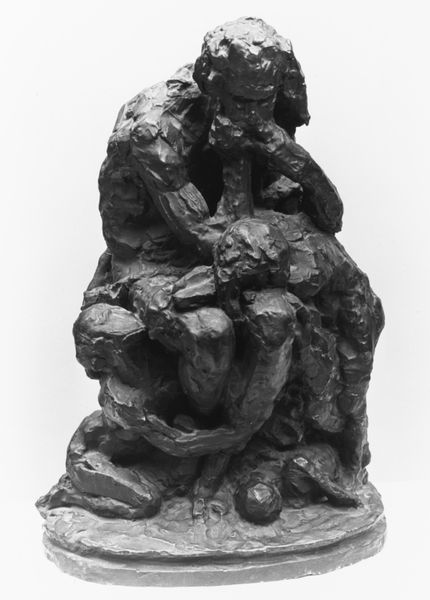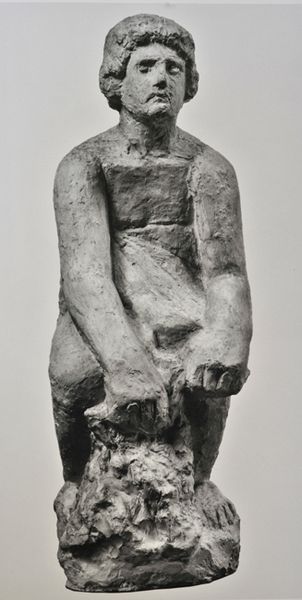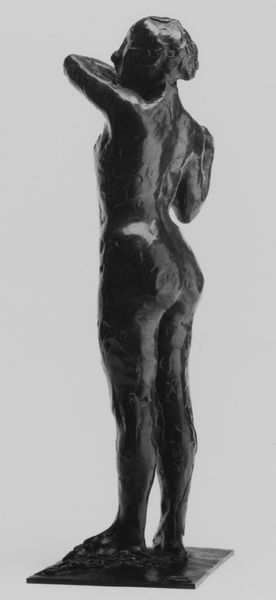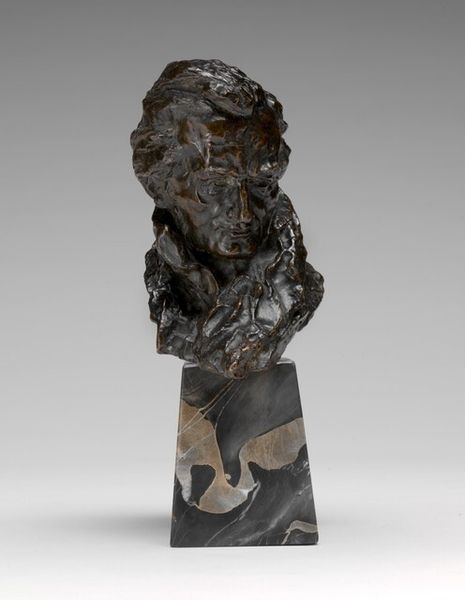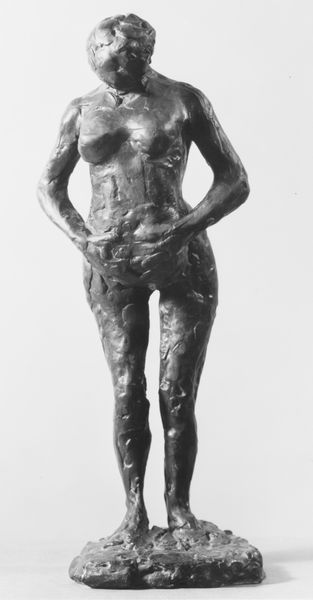
Dancer Putting on Her Stocking (First State) 1891 - 1920
0:00
0:00
Dimensions: Overall (Figure only, confirmed): 18 1/8 x 7 3/4 x 8 in., 17.9lb. (46 x 19.7 x 20.3 cm, 8.1421kg); Overall (As mounted on base): 21 1/2 x 9 3/4 x 11 3/4 in. (54.6 x 24.8 x 29.8 cm)
Copyright: Public Domain
Curator: Edgar Degas, best known for his paintings of dancers, also created a series of sculptures later in his career, including this bronze, "Dancer Putting on Her Stocking (First State)," modeled between 1891 and 1920. Editor: The texture! The materiality feels so raw. There is a real sense of the artist's hand in shaping the bronze. Yet the contorted pose is slightly unsettling, like an interrupted private moment. Curator: I find it more elegant. The work uses distortion and asymmetry, departing from classical sculpture ideals of harmony, to create a fascinating dynamic. We see this same focus reflected in his pastels and paintings. Editor: Perhaps, but let's think about the broader context of these dancer figures. Degas often depicted these women as objects of the male gaze, emphasizing their bodies and reducing them to spectacles for a largely male, upper-class audience. Do we see a similar objectification here? Curator: It is not necessarily about objectification but about capturing a modern aesthetic in his radical depiction of form. The impressionistic manipulation of shape itself is interesting because he focuses on conveying the sensation of movement rather than hyper-realism. The piece uses sharp edges to break away from the classical forms, like his paintings with cropped perspectives. Editor: It is definitely productive to talk about both technique and context because this bronze speaks to the complex position of women in Parisian society at that time, especially within the world of ballet—a rigid environment where they were constantly assessed, disciplined, and keenly observed. Curator: Your points are definitely valid and give insight into understanding the possible perspectives around this work. But regardless, it is evident that it reflects Degas' interest in challenging traditional notions of beauty through abstract, yet controlled distortion, an observation of pure motion and modern aesthetic rather than mere anatomical accuracy. Editor: Indeed. It highlights that no work exists in isolation. Analyzing it requires attention to materials and construction, like bronze's cold and rigid form in tension with the warmth of capturing human movement, and recognizing the historical environment where the artwork gains much deeper resonance. Curator: An understanding of both elements is fundamental for viewers engaging with a historical work like this today, agreed.
Comments
No comments
Be the first to comment and join the conversation on the ultimate creative platform.
